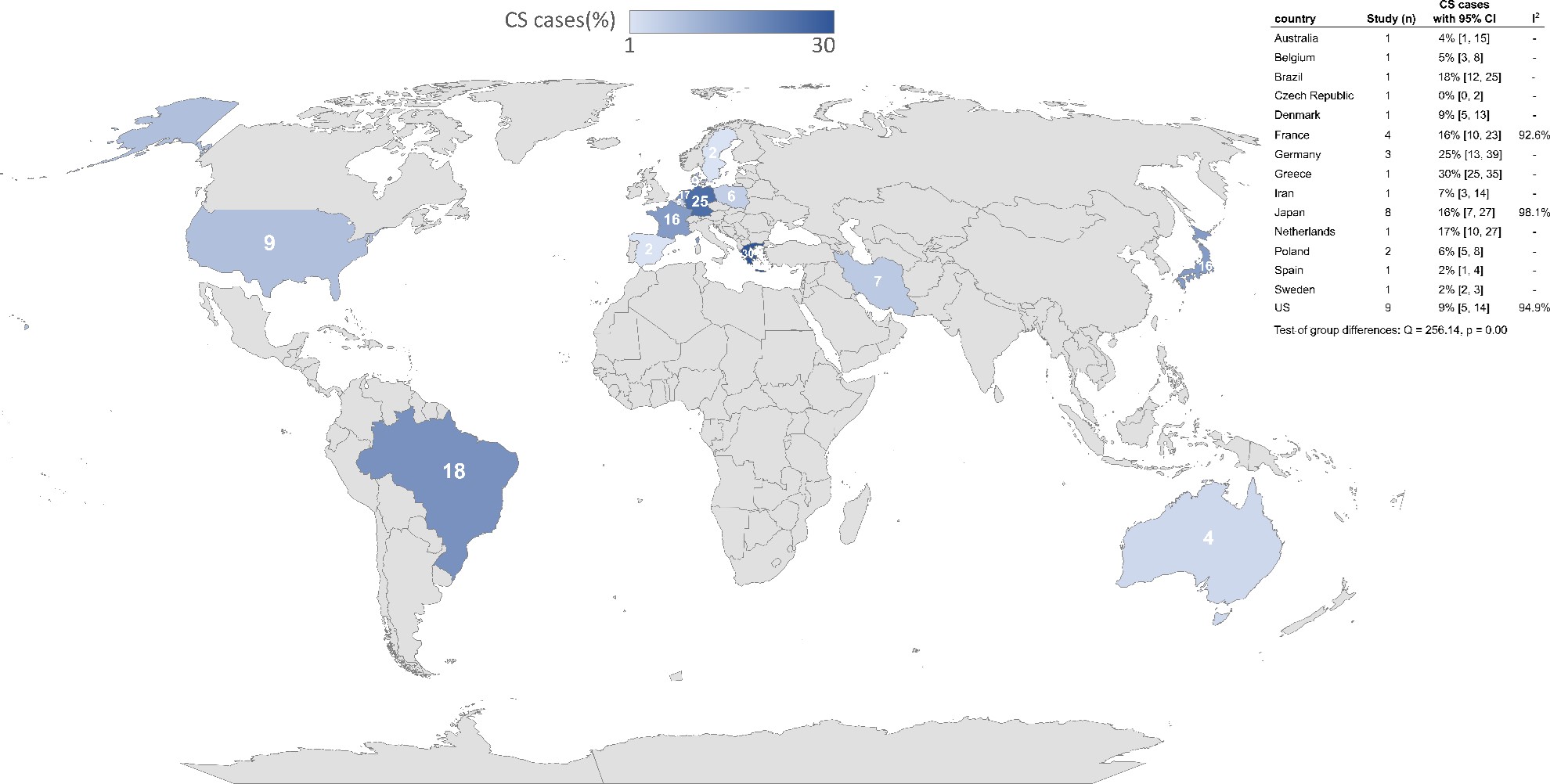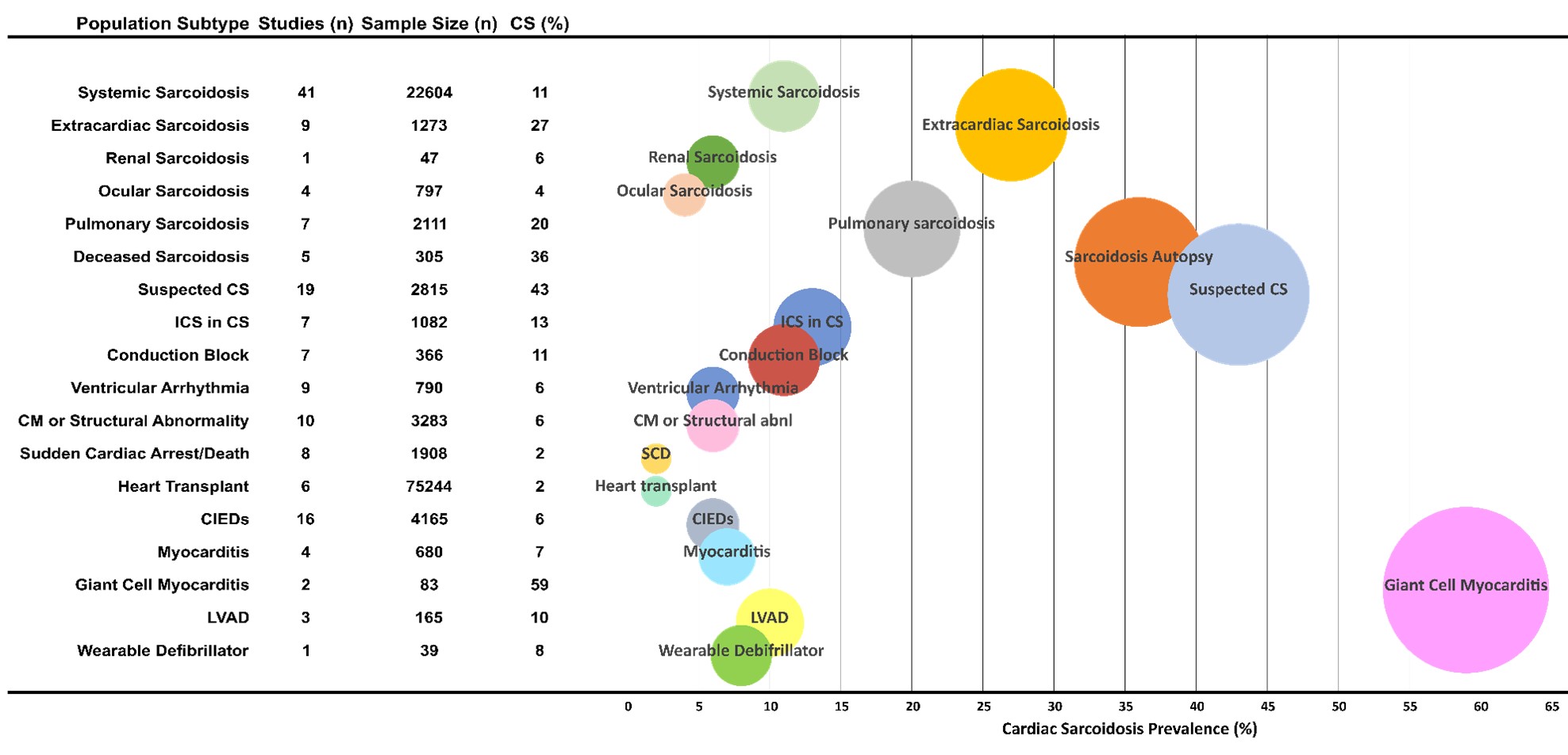Session Information
Session Type: Poster Session C
Session Time: 9:00AM-11:00AM
Background/Purpose: Cardiac sarcoidosis (CS) results from granulomatous infiltrating of the myocardium and manifests as an extended clinical spectrum from silence to conduction disturbances, ventricular tachyarrhythmias, heart failure, and sudden cardiac death. Despite the various presentations, there is a dearth of cumulative evidence of CS prevalence, and the current knowledge is mainly based on studies with small sample sizes or performed in selected countries. This study aimed to use a systematic review and meta-analysis methodology to explore the CS prevalence among population subgroups worldwide and patients with different cardiac abnormalities.
Methods: A literature search was conducted in the PubMed and EMBASE databases until September 8, 2022. Methodological quality assessment of non-randomized studies was performed with high-quality studies included. The statistical analysis included meta-analysis using a random-effects model to estimate pooled CS prevalence and accounting for variations in the study populations, the timing of CS diagnosis, and the length of follow-up between studies in the subgroup analyses.
Results: The prevalence of CS was reported in 172 studies conducted in 28 countries across five WHO regions, with a significant proportion of research originating from the United States (37%) and Japan (21%) and a cumulative total of 122,535 individuals (Figure 1). The prevalence of definite CS among patients with systemic sarcoidosis, extracardiac sarcoidosis being screened for CS, and patients with clinical signs of CS was 11% (9%-14%), 27% (18-37%), and 43% (36%-50%), respectively. Besides patients with suspicions of CS, a higher pooled prevalence was also found in patients with an initial diagnosis of giant cell myocarditis (59%) and deceased sarcoidosis patients undergoing autopsy (36%). Among the organ-specific sarcoidosis cohort, cardiac involvement was diagnosed in 20% of pulmonary sarcoidosis patients, 6% of renal sarcoidosis patients, and 4% of ocular sarcoidosis patients. Seven studies showed that the prevalence of sarcoidosis with cardiac involvement only (isolated cardiac sarcoidosis, ICS) was 13% (4%-26%). Regarding subgroups of cardiac manifestations, 11% of patients with unexplained conduction block and 6% with ventricular arrhythmia or unexplained cardiomyopathy/structural abnormalities were diagnosed with CS. In comparison, CS was identified in 2% of patients who had succumbed to sudden cardiac arrest or death and 2% of patients eligible for or undergoing heart transplantation (Figure 2).
Conclusion: This systematic review and meta-analysis is the first study to provide an overview of CS prevalence among large-scale populations worldwide and introduces important epidemiologic data at population and organ-specific levels. Essential gaps in current epidemiology research of CS were also identified. We encourage and advocate for further global research efforts with the inclusion of currently underrepresented populations to better understand CS.
To cite this abstract in AMA style:
Shao D, Seo J, Mangeshkar S, Nazarenko N, Esagian S, Palaiodimos L, Kokkinidis D. The Prevalence of Cardiac Sarcoidosis – A Systemic Review and Meta-Analysis [abstract]. Arthritis Rheumatol. 2023; 75 (suppl 9). https://acrabstracts.org/abstract/the-prevalence-of-cardiac-sarcoidosis-a-systemic-review-and-meta-analysis/. Accessed .« Back to ACR Convergence 2023
ACR Meeting Abstracts - https://acrabstracts.org/abstract/the-prevalence-of-cardiac-sarcoidosis-a-systemic-review-and-meta-analysis/


